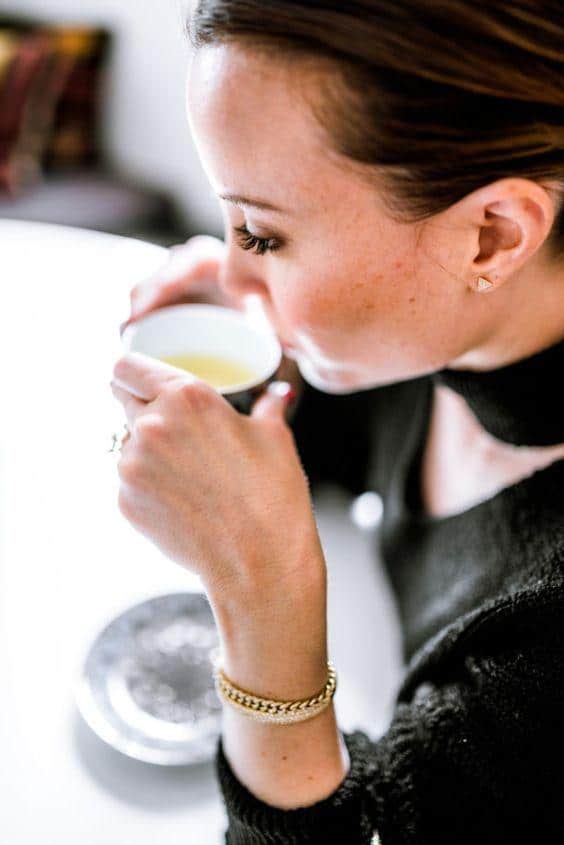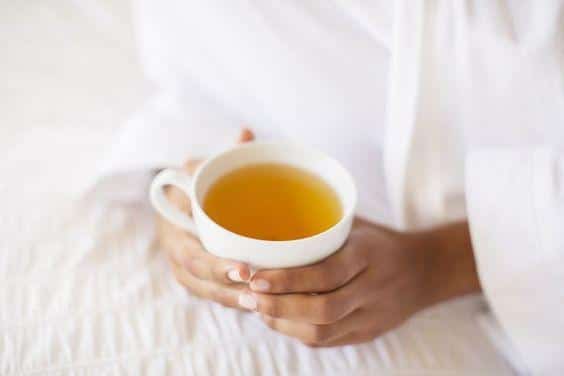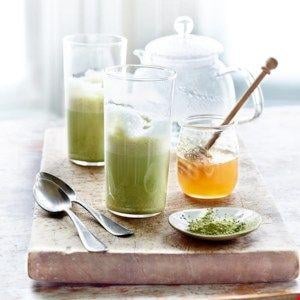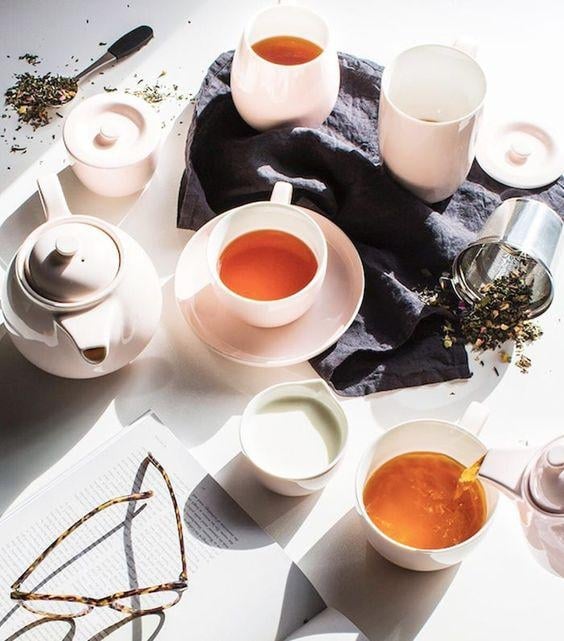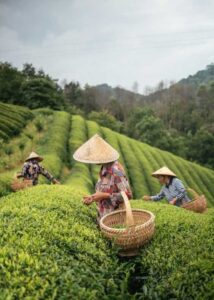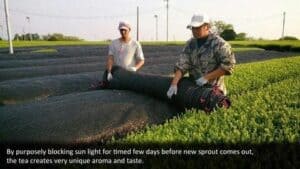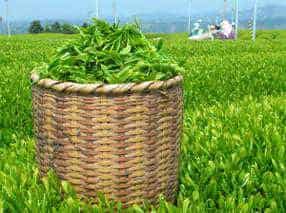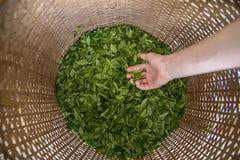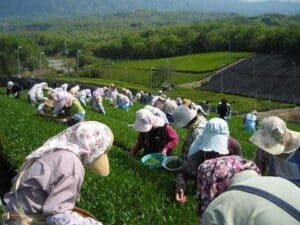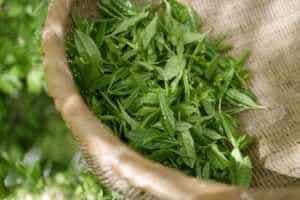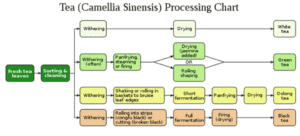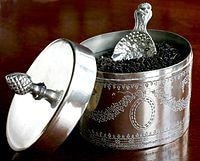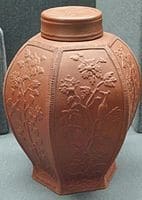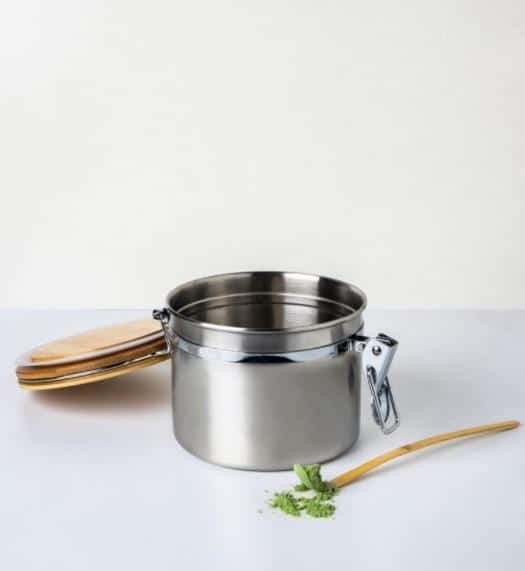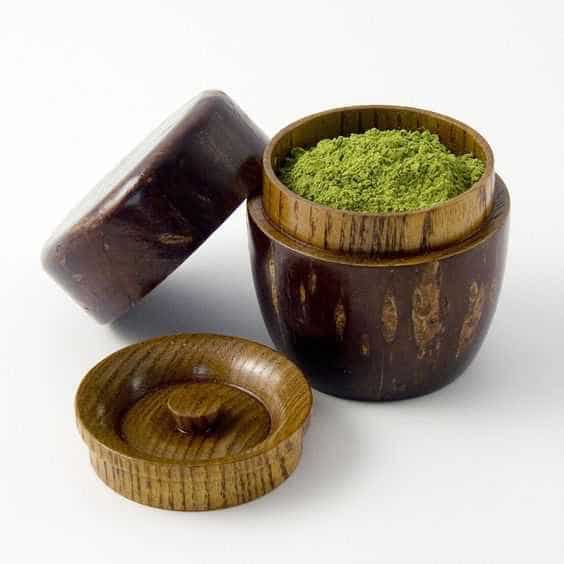Tag: ชาเขียว
The Oral Health Benefits of Green Tea
Tea Drinking Dos and Don’ts
How to Become a Tea Expert
I believe that many people who love tea would like to be known as a Tea Expert / Tea Sommelier, who has special knowledge and expertise, can distinguish different types of tea, and know the temperature or type of water required to brew each type of tea to achieve the best taste.
If you have true knowledge and understanding of tea brewing, you’ll not only become a Tea Expert, but you’ll also be able to leverage this knowledge to further your business, such as becoming a consultant at tea shops and restaurants, helping to design and pair food and dessert menus with tea to enhance the flavors. So, let’s take a look at the list of what knowledge you need to become a Tea Expert.
Tea cupping is a method of brewing tea that has many different brewing methods, such as using chazen to brew tea made from green tea powder (see more at shorturl.at/desuL) or using cold-pressed tea (see more at shorturl.at/gAV57). There are many other ways to brew tea that you should know.
Tea culture: Know the tea drinking culture of each country so that you can create the tea story you want to present.
Different brewing and presentation techniques of tea: How to brew and present each type of tea to make it more appetizing, or what style of food or dessert should be paired with it?
Blending and Flavoring Tea : Learn how to blend your own teas, or combine them with flowers or other herbs, to create new flavors and aromas.
Tea brewing and presentation techniques, Japanese-style tea serving styles, and English-style tea are also different. Serving in the correct containers or using decorative props will greatly enhance the aesthetics of tea drinking.
Understand how to grow and harvest tea to obtain the best tea leaves and tea powder, whether it’s organic tea cultivation or simple experiments at home. Learn the factors required to grow tea for the best results.
However, becoming a Tea Expert requires more than just in-depth knowledge. Experience and repeated experimentation will enhance your tea-making senses, including aroma, flavor, and color perception. Beyond the essential knowledge and understanding of tea, additional knowledge about marketing or tea shop management will further enhance your tea shop’s marketing plans and sales techniques.
Source
Article from: Fuwafuwa
Can you turn your garden into a green tea plant?
Green tea lovers will love this experiment: Transform your home garden into a green tea tree. Start by planting seeds in a 6×8-inch plastic bag. Fill the bag with soil mixture. Place the good tea seeds in the center of the bag, bud side down, and cover the seeds with about an inch of rice husk charcoal or sand mixed with coconut husks. Shade the seeds and water them regularly during planting. This method is chosen because it doesn’t take up much space in a home garden. Propagation by seed is also a popular method in Thailand. Tea trees grown from seed have strong root systems and a taproot that can withstand drought well.
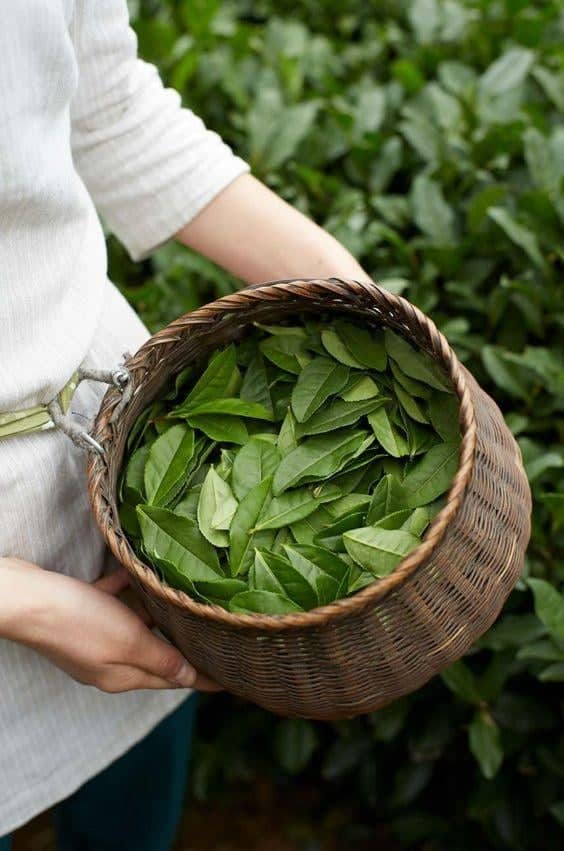
An important factor in growing tea is that it can grow regardless of hot or cold weather, except in areas with ice. There are other factors as well, namely:
- Soil: Tea will thrive in well-drained, slightly acidic, loamy soil with a pH of 4.5-6.0 and a slope of no more than 45 degrees.
- Humidity and rainfall: The area should receive consistent rainfall throughout the year. Minimum rainfall should be between 1,140-1,270 millimeters per year. A lack of water will stunt the growth of the tea plants and prevent them from sprouting, leading to reduced yields.
- Temperature: Tea can grow in different temperatures, but it thrives best between 25 and 30 degrees Celsius, and the temperature remains relatively constant throughout the year, allowing the tea to continuously produce new buds.
- Altitude above sea level: Tea grown in high altitudes of 1,000 meters or more, with cool weather, will produce high quality tea leaves. The tea leaves have a good smell and taste, but the yield will be low. Tea grown in low altitudes, with relatively hot weather, will produce high yields but lower quality than tea grown in high altitudes.
After checking all these factors, it is clear that the factors that are not suitable for growing tea are:
- The lower soil layer is rocky or gravel, which allows the tea to root shallowly to find food.
- It is an area that does not have drainage and has limestone and a pH of more than 6.
- The area is too steep.
- Soil that has little organic matter and cannot retain moisture
- Areas with strong winds where it is impossible to make a windbreak, because tea trees are plants that need shade to protect them from the wind, helping to reduce daytime temperatures and reduce the amount of sunlight that shines directly on the tea trees, allowing the tea leaves to photosynthesize better. Because if the tea trees receive full, direct sunlight, it will make the leaves small, yellow, or burn. If the tea leaves are not cooked, the trees will deteriorate and eventually die.

Tea harvesting is crucial because producing high-quality tea begins with fresh, high-quality tea leaves. The best quality tea leaves are those harvested from buds containing one bud and two leaves. Tea harvesting begins at 60 centimeters, typically from March to November, with an average harvest every 10 days. The ideal time to harvest is between 5:00 AM and 2:00 PM. Don’t pack the buds too tightly in baskets or sacks, as this can bruise the buds and compromise their quality due to the heat generated by the leaves’ respiration.
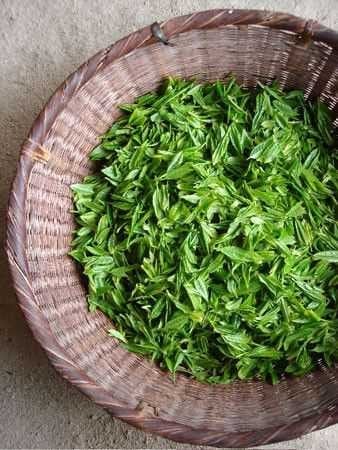
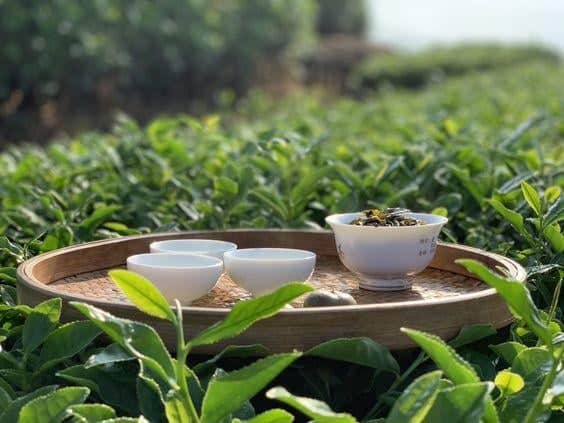
Good tea seeds suitable for planting should be collected from fully ripe, brown berries that are still attached to the tree. Seeds that have fallen under the tree should not be collected. After collecting fully ripe berries from the tree, remove the shells or place them in a winnowing basket or basket and leave them in a shady area. The tea berries will dry and burst within 2-3 days. Then, quickly plant the seeds, as tea seeds contain a high oil content, which causes a very rapid loss of germination. Before planting, soak the seeds in water for 12-24 hours. Spoiled seeds will float; cut them off and use only the seeds that sink for planting.
After you’ve tried growing your own tea and want to create an organic tea farm, you can get tea that’s safe for your health in the long run, with no chemical residue. You can find more details at : Getting to Know Organic Green Tea Growing.
Source: https://www.japanesegreenteain.com
https://i.pinimg.com/originals/72/ea/da/72eada1447275ef65d7ab82ff6cd381e.jpg
http://technology-farmmer.blogspot.com/2015/02/blog-post_20.html
Article from: Fuwafuwa
10 things about growing green tea that you (probably) never knew
Green tea is at the heart of Japanese culture. From the harvesting to the preparation of the leaves, every step is meticulous, complex and deeply rooted. Green tea harvested in Japan has certain flavors and nutritional properties that are different from teas from China and other parts of the world. Here are 10 things about Japanese green tea that you (maybe) didn’t know.
- The first harvest of the year, the tea leaves are the most nutritious and sought after. The first harvest begins in May and lasts for several weeks until June. This harvest is known to produce the highest quality green tea leaves, largely due to the slow growth during the cold months, which makes the leaves denser in nutrients, resulting in a better flavor. The leaves picked in spring contain three times as much L-theanine as those produced in later harvests, giving this first batch of tea a sweet and mild flavor.
- The second harvest of the year in June and July is very hot because it is summer, making harvesting very difficult. During this time, the tea leaves grow faster and are of lower quality, with a more bitter taste, requiring more efficient management of both employees and harvest control.
- KANREISHA CURTAIN or black curtains that are popularly used to cover the ground can be used to protect tea plants from direct sunlight. About a month before each harvest, tea plants are covered with curtains to limit the amount of sunlight that does not directly hit the tea plants. There are two types of curtains used in Japan: the type that uses direct cloth to cover the plants and the type that uses awnings to block the sunlight. Each tea plantation has different uses. Some places use both types. Tea plants that are covered with such curtains before harvesting will help the tea to develop a sweet taste.
- Each tea leaf is carefully selected by the tea pickers. Compared with the tea leaves selected by machine, the quality of the tea leaves is not as high as those picked by hand. The taste of the tea leaves by hand is more mellow and the aroma is more delicate. The best time to pick the leaves is when there are three to five young plants and the leaves are of the right size. Picking too early means less yield. Picking too late affects the quality of the tea. Even one day can make a difference and make the leaves bitter. Therefore, it is very important to pick the tea leaves at the right time and pick them quickly and all at once. Therefore, each worker must use his experience to pluck the leaves quickly and meticulously.
- Japan actually produces less tea than other countries. Despite its strong green tea culture, Japan produces only 7% of the world’s green tea. Most of it is consumed domestically, and only a small portion is exported to other countries. The Japanese consume 95% of all tea production in the country, leaving only 5% exported to other countries.
- The most popular method of storing tea leaves is still the use of traditional wooden baskets. Despite the widespread use of machinery and technology, traditional wooden baskets are still used to store tea.
- In the fall, tea plantation workers start preparing the farm for the next year’s harvest. Green tea trees are pruned in the autumn months of October and November. Pruning at this stage ensures that the young leaves of the old leaves do not mix with each other and reduce the harvest in the spring of the following year. Failure to prune at the right time will harm the tea trees and may even result in weak tea trees. Therefore, in late summer and early autumn, the soil must be enriched and the pH of the soil adjusted to the appropriate level.
- There is a tea harvest tour. Obubu is the Kyoto word for a type of green tea, which is one of the most expensive teas in Japan, costing around 14,000 yen per kilogram. For over 800 years, the farm in rural Kyoto Prefecture has been open to visitors and the public during the harvest season. It begins with a morning tour of the farm and the opportunity to pick your own tea leaves. The staff will demonstrate how to pick the leaves, and visitors will be given a traditional wooden basket to collect the leaves. The leaves can then be sent for processing or roasted, ready to be served as a tea drink made from the leaves you have picked for a delicious cup of tea.
- Green tea plants require special care during the winter. Dry leaf straw and bamboo husks are placed beside the plants to provide warmth during the cold and snowy months, act as fertilizer and help maintain the soil at the right level of moisture. Since many plants are prone to disease and die during the winter, the tea plants must be well cared for to ensure they are ready for the next harvest.
- Harvesting in Japan is different from the techniques used in China, as the Japanese pick certain leaves at different times of the year, while in China they usually pick all the leaves at one time.
The process of harvesting tea leaves is a complex task that takes a whole year. From the first harvest to the last, farmers in Japan work tirelessly to produce the highest quality tea possible for the best tasting tea.
Source
Article from: Fuwafuwa
Iced Matcha Latte Iced Matcha Latte
Turn your cold green tea into a premium matcha latte, a popular menu item of the shop that is so delicious you have to tell others!!
Good quality matcha powder will give a beautiful green color. When poured over fresh milk, you will see a layer of emerald green gradually seeping down. The method of making it is not difficult. Especially if you have the equipment to help, it will not take long to brew. Let’s see the ingredients and brewing method. ^^
Dissolving aid
- Matcha powder sieve
- Chasen (茶筅) is a bamboo stick used to grind green tea powder to prevent it from clumping.
- Portable milk frother (Mini milk mixture)
- Shaker cylinder
Ingredients for a 16 Oz. glass.
- MATCHAZUKI Excellent Grade Matcha Powder 3 grams (~1.5 teaspoons)
- Warm water 40 ml
- Fresh milk 150 ml
- 10 ml syrup (~2 teaspoons)
- ice
Brewing process
1. Dissolve matcha powder in warm water by sifting matcha powder through a sieve into a cup or bowl, then pour in warm water and use a Chasen or milk frother to beat the tea powder into the water. Then set aside.
2. Add ice to another glass.
3. Add syrup according to desired sweetness.
4. Pour in fresh milk and mix with syrup.
5. Pour the dissolved matcha over the fresh milk.
Or you can watch a video on how to make it here ^^
*** If you don’t have a dissolving device, try this method.
———————————-
Getting to know the tea production process (Tea Processing)
The tea production process is considered an art. Because of the close control of production And with the meticulousness of every production step, it will result in a variety of teas with different flavors. Whether it is drying the tea leaves, or withering, through rolling and fermentation or oxide reaction, every step is important to the taste of the tea. The production of good tea leaves must also be planted in good quality. Because the important part comes from the natural environment, both the terrain and the climate. And there are many things that are worth knowing about growing green tea (Read more at https://bit.ly/3eRNXRU ). In Japan itself, there are only a few places that can grow green tea with good yields. The well-known area is Uji City, Kyoto, where farmers have experience in both planting and harvesting techniques.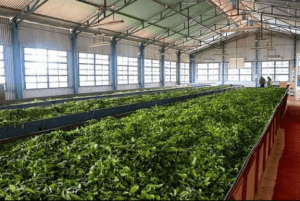
The tea leaf harvesting process begins in early May, when the young leaves are carefully selected from the tea plant, with the best young leaves being called “ichibancha (一番茶).” Experts select only the youngest and greenest leaves to be namacha (生茶), or “fresh tea.” The leaves then go through the main production steps, as follows:
- Withering: This process is done by shaking off moisture from fresh tea leaves at room temperature for 8-24 hours (depending on the type of tea to be produced). The leaves are then dried to reduce the water content of the tea leaves by 50-60%. The resulting tea leaves are soft and bendable before being processed further.
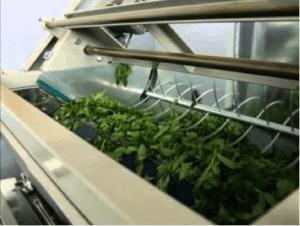
- Rolling: By rolling the leaves to dry them by twisting and crumbling them. During rolling, some broken leaves are normal. If there is no machine, some people may shake or use their hands. During the rolling process, oil will come out of the tea leaves, giving the tea a special aroma. The chemical changes that occur for a short period of time through rolling will result in tea leaves with good taste and aroma. After that, they will be sent to a sifter to separate the types of tea. Small leaves will go to the next step, while bigger and harder leaves will be sent back to be rolled a second time.
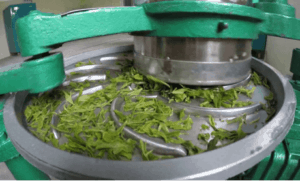
- Oxidation/Fermentation is a chemical process in which oxygen is absorbed to release enzymes that react with air. It begins when the leaf membranes break down during oxidation, causing the leaves to turn a bright gold color. This is the key factor in determining whether a tea is green, black or oolong. It is a transitional stage that affects the aroma and color. If this stage is stopped too soon, the tea will be green and may have a metallic taste. If fermented for too long, it will gradually become sweet and lose both its quality and aroma.
- Drying or burning: This process will dry the leaves evenly throughout the leaves by applying continuous heat of about 120-200 degrees Fahrenheit to stop the oxidation fermentation process. There are two ways to stop the oxidation fermentation process: steaming using heat or by roasting. The tea leaves are placed in a large iron basin for about 20-30 seconds and heated to 100 degrees Celsius. This stops the destruction of the enzymes that cause fermentation. The tea leaves remain green. Roasting causes the tea leaves to turn black and dry, leaving only 2-3% moisture. However, excessive heat can cause the tea to lose its flavor, color, and aroma.
- Grading is a process in which leaves are graded using a screening device or sieve with different sized burrs.
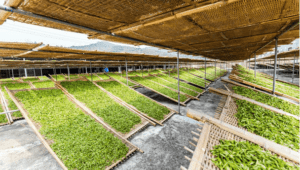 The above steps do not mean that all types of tea must go through this process, but it is just an overview of the tea leaf processing process. The production of each type of tea will have slight differences, resulting in different flavors. For example, the production of white tea has the shortest steps because it does not have to go through the rolling process and the fermentation process or the oxidation reaction. The young tea leaves will be picked and dried before entering the drying process using steam immediately. Because white tea does not have a fermentation process, the color of the tea leaves is still green and white. In terms of the production of black tea , it is the tea that goes through the most processing steps. The collected tea leaves will go through the full fermentation process, consisting of the 5 basic steps above. During the drying period, the leaves will be 80% dry, which is black tea. But if it is dried too much, it may not have a fragrant smell. The method of making oolong tea is similar to black tea, but the difference is that the leaves are dried directly in the sun for 6 hours. Then, the leaves are shaken in a bamboo basket to make the edges of the leaves flawed, while the center is still green. The fermentation time is about half that of black tea. The oxidation reaction is stopped by making a fire. For oolong tea, the leaves are heated at a higher temperature because they contain a lower water content.
The above steps do not mean that all types of tea must go through this process, but it is just an overview of the tea leaf processing process. The production of each type of tea will have slight differences, resulting in different flavors. For example, the production of white tea has the shortest steps because it does not have to go through the rolling process and the fermentation process or the oxidation reaction. The young tea leaves will be picked and dried before entering the drying process using steam immediately. Because white tea does not have a fermentation process, the color of the tea leaves is still green and white. In terms of the production of black tea , it is the tea that goes through the most processing steps. The collected tea leaves will go through the full fermentation process, consisting of the 5 basic steps above. During the drying period, the leaves will be 80% dry, which is black tea. But if it is dried too much, it may not have a fragrant smell. The method of making oolong tea is similar to black tea, but the difference is that the leaves are dried directly in the sun for 6 hours. Then, the leaves are shaken in a bamboo basket to make the edges of the leaves flawed, while the center is still green. The fermentation time is about half that of black tea. The oxidation reaction is stopped by making a fire. For oolong tea, the leaves are heated at a higher temperature because they contain a lower water content.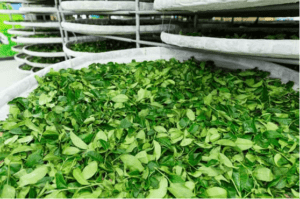
Green tea starts with the first drying of the tea leaves. After that, they are placed on a pan or steamed to prevent the oxide reaction. Finally, the leaves are rolled and dried quickly for the last time. This method keeps the tea leaves green. Due to the simple and less steps in the production process, green tea still has more beneficial plant substances than other types of tea. Green tea can also be divided into 2 types: steamed green tea and roasted green tea.
1.1 Steamed green tea is the process of stopping the chemical processes in the tea leaves by steaming them for a short period of time. When picking the tea leaves, they must be steamed at a temperature of 100 degrees Celsius for 0.7 minutes to stop the activity of the enzyme polyphenol oxidase. Then, they are massaged with hot steam to reduce the moisture content in the leaves. Then, they are massaged in a room at normal temperature to break the cells and massaged with heat again to make the tea leaves roll up beautifully. Then, they are dried to reduce the moisture content in the tea leaves to 4%. Most steamed green tea is processed in Japan. The color of this type of tea is green to yellowish green because it still contains chlorophyll.
1.2 Roasted green tea is tea that stops the chemical processes in the tea buds by roasting them in a hot pan at a high temperature of about 300-350 degrees Celsius, then kneading to break the cells until they roll up and dry. Roasted green tea can be separated into 2 types: lightly fermented roasted green tea and unfermented green tea. The color of the tea is light green with a yellow tint.
From the various steps of tea production process above, it can be easily summarized in this diagram.
I believe that tea lovers, after reading this article, many of you will definitely start to be interested in visiting tea plantations in Japan ^^
Source
http://www.refresherthai.com/article/teaMade.php
http://www.ocha.tv/how_tea_is_made/process/schedule_ryokucha/
Article from : Fuwafuwa
Learn more about tea storage boxes
Most green tea lovers already know that tea powder should not only be stored in a tightly closed, opaque, and airtight container, but also be kept away from sunlight or heat for long periods of time, and should be stored in a cool place. However, after taking it out of the refrigerator, it should be left for a while to cool before opening the container to prevent the tea from becoming damp.
Since tea powder is sensitive to light and has a delicate storage method, the tea storage box should be as precise as possible to preserve the quality of the tea and protect the tea powder from the air. Therefore, glass bottles and transparent bottles are not suitable for storing tea powder. This tea powder storage box is called棗 or natsume (Tea caddy) in Japanese.
The origin of tea storage boxes comes from Europe because in the past, tea was very expensive. The culture of tea consumption among the British was spread from China in the mid-17th century. At that time, it was believed that tea could cure diseases and had many health benefits. Tea had been known in the East for thousands of years. The British therefore valued tea very much. Because tea at that time was expensive, it had to be stored with a lock and key very well. The boxes used to store tea powder were often expensive and decorated to match the atmosphere in the living room or other reception rooms where tea would be served. Tea storage boxes come in many materials, such as wood, with mahogany and rosewood being popular. There are also many different looks, both hexagonal and octagonal. There have been continuous developments, including boxes made of clay, stainless steel, in many shapes and designs. However, the most obvious characteristic is that all types of boxes are opaque. If anyone currently puts their tea in a clear plastic box, even if it has a tight-fitting lid, it would be better to change to a box with the correct shape.
Therefore, when choosing a tea storage box, you can choose either stainless steel or wood. Just make sure the lid is tight. If there is a lock to close it tightly, it will help extend the shelf life of the tea powder. If anyone is looking for a tea powder storage box, try choosing from htps://matchazuki.com/product/canister/
Source
https://matchazuki.com/product/canister/
Article from: Fuwafuwa
Tea & Travel Tea from different countries
Are you bored with having to work from home, drinking the same old beverages, not being able to travel abroad, so the opportunity to learn about each country’s tea culture by yourself has been missed. Today, MATCHAZUKI will take you to get to know the uniqueness, differences and strengths of each country’s tea instead of flying to taste it yourself. Let’s see what the strengths of tea, a universal beverage, are from each country, and what type of tea it is.
Start with Turkish tea , a tea served in a small glass with a sugar cube. Hot tea is a popular drink and can be drunk at any time and on any occasion. Turkish teapots are double-layered kettles with hot water on the bottom and tea leaves and hot water (tea). Place the kettle on the stove, add water to the bottom kettle and dry tea leaves to the top kettle. Do not add hot water yet. Wait until the water in the bottom kettle boils. Pour hot water from the bottom kettle into the top kettle until it covers the tea leaves. Place the top kettle on the bottom kettle. Turn down the heat and continue to brew. The tea brewing method is complete. To pour tea, pour tea from the top halfway into a teacup and add hot water from the bottom kettle. Adjust the strength to your liking. Add sugar cubes and stir until the sugar dissolves. Stir until the spoon and glass clink together to create a delicious tea experience. Turkey has many types of tea leaves, the most popular being black tea, apple tea, and chamomile tea.
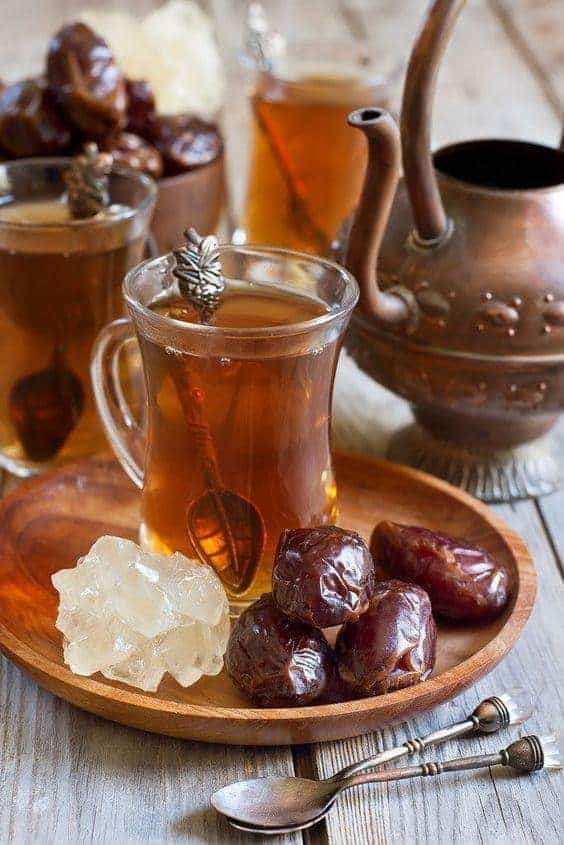
Moroccans enjoy a refreshing green tea with mint leaves, which is a famously sweet tea, so don’t forget the sugar, and Moroccan tea is often served with a variety of dried fruits and nuts for dessert.
Kuwaitis love black tea mixed with cardamom and saffron. Tibetan tea is made with milk, yak butter and salt. It has a bitter taste, so it is popular among children, adults and the elderly. It is also a tonic for practitioners. Tibetan tea is usually black tea, pressed into blocks. In areas where yaks are raised, this type of tea is drunk by boiling it with milk. In central and parts of Kham, such as in Gyalthang (Shangri-La), butter is added, a little salt is added and pounded in bamboo tubes, resulting in a unique Tibetan beverage called butter tea. However, in areas where animals are not raised, fresh milk is hard to find, so salt is added to black tea. Interestingly, when Tibetan tea is kept in yak skin for more than ten years, it becomes “fermented tea”, which becomes a health tea. The older this type of tea is, the more valuable and expensive it becomes.
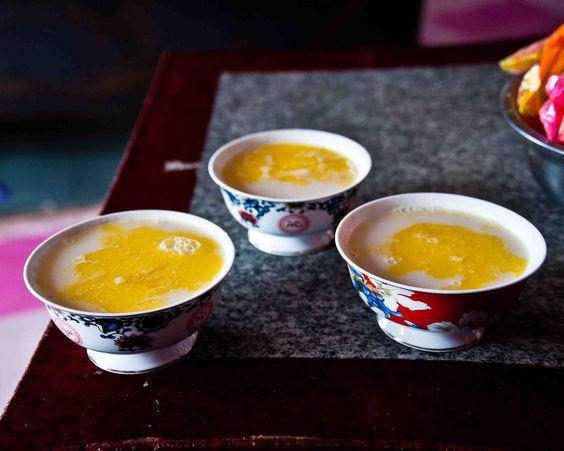
Hong Kong people add condensed milk to their tea and ice, similar to iced tea. However, Taiwanese tea is famous for its tapioca pearls, which originated when Taiwan added large pearls of boiled sugar to tea to enhance both the flavor and the interestingness of drinking tea. It has spread and become famous all over the world, not just in Asia, but even blonde Westerners cannot help but be amazed by the interesting novelty and the incredibly delicious taste of Taiwanese “pearl milk tea.”
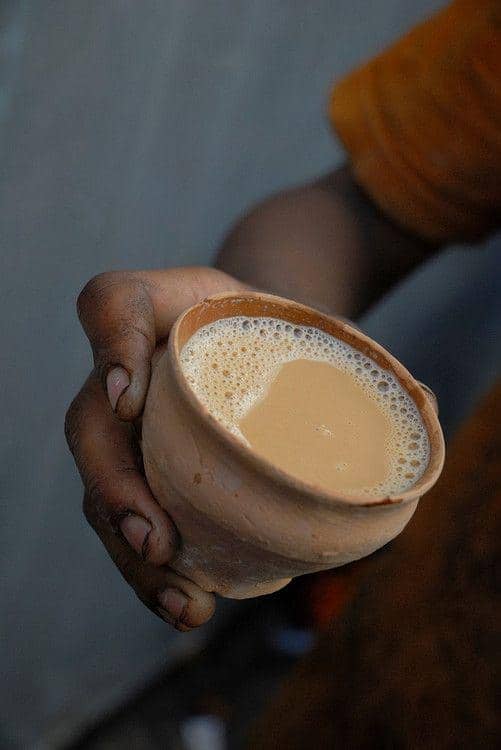

American Tea Although Americans do not drink as much tea as the British, because Americans prefer to drink coffee rather than tea, tea plays a significant role in American society. During the period when the United States was a British colony, tea leaves that were to be brought to the United States were subject to taxes, which led to violent protests. This was the issue that led to the declaration of independence of the United States from England. In addition, it can be said that Americans revolutionized the way tea is drunk, which has become popular all over the world until today, namely, tea bags and iced tea. However, Americans still like to drink black tea, just like the British, and usually drink black tea with lemon and sugar. Baking soda is another ingredient that Americans add to make the tea taste smoother.
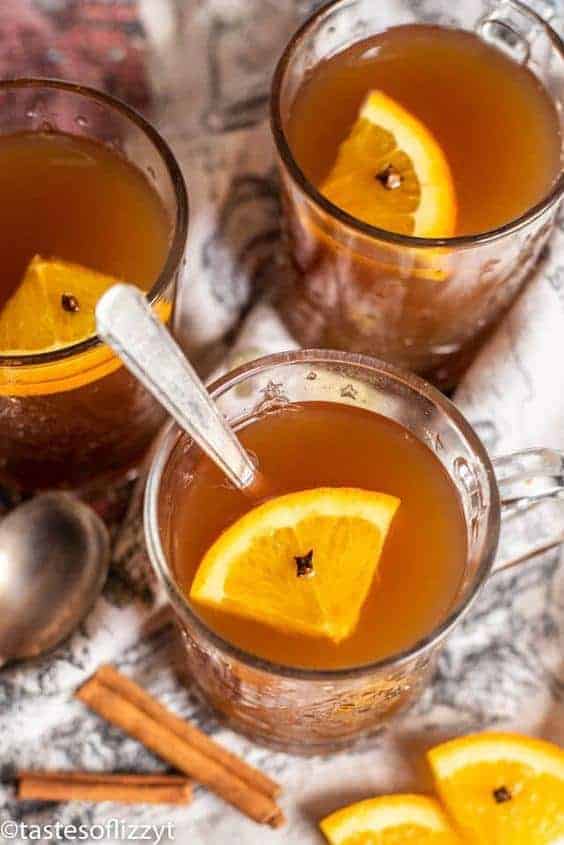
Pakistani Masala tea, made with spices and cow’s milk butter, is also known as “mixed-spiced tea.” It is mainly made with black tea leaves from the Assam state and is blended with a variety of Indian spices such as cardamom, star anise, coriander seeds, nutmeg and cloves. It was originally used as a medicinal and Ayurvedic drink thousands of years before the British introduced “tea” to the world. Today, Masala Chai is known around the world as a black tea steeped in milk. Westerners have adapted it into a “Tea Latte”, but Pakistani tea must have the sweetness of palm sugar, the richness of fresh milk and the aroma of spices.

As you can see, in addition to the Japanese green tea that everyone is familiar with, other countries also have different tea drinking cultures. The traditional taste of tea that we drink also changes in each country. If the COVID situation is over, I believe that many people will definitely go out to travel and taste tea in different countries.
Source
https://petmaya.com/21-tea-around-the-world-wow
http://theteashelf.com/teas-across-the-world/
http://thewoksoflife.com/2015/08/yuanyang-tea-hong-kong/
https://www.tastesoflizzyt.com/russian-tea/
http://myturkeyfood.blogspot.com/
https://www.flickr.com/photos/61259075@N08/14486900931/
Article from: Fuwafuwa
Tea Pairing: A Guide to Flavorful Food Combinations
เป็นที่ทราบกันดีว่า ชาเป็นอีกหนึ่งเครื่องดื่มที่จะช่วยเพิ่มและดึงกลิ่นและรสชาติที่ละเอียดอ่อนของอาหารหลายประเภทออกมาได้ เช่นเดียวกับไวน์ ที่พวกเราจะคุ้นเคยกับกฎพื้นฐานที่ว่า ไวน์แดง จะเสิร์ฟกับอาหารที่มีเนื้อแดง ส่วนไวน์ขาวเสิร์ฟพร้อมกับเนื้อปลาและอาหารมังสวิรัติ ดังนั้นการเรียนรู้ว่า ชาชนิดใดสามารถเติมเต็มรสชาติของอาหารได้บ้าง จึงเป็นศาสตร์ที่คนรักชาควรศึกษาเพิ่มเติมไว้เพื่อช่วยให้รสชาติชาเขียวทำให้เมนูอื่นๆในร้านอร่อยมากยิ่งขึ้นนั่นเอง
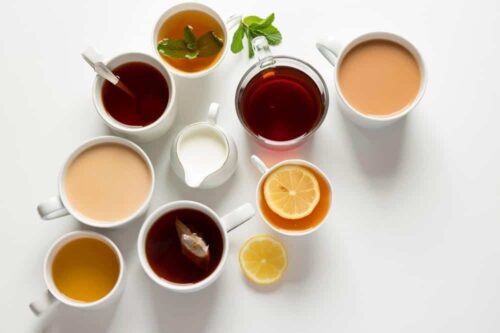
ชาแต่ละชนิดก็จับคู่กับอาหารอะไรเพื่อช่วยดึงรสชาติได้แตกต่างกัน เช่น ชาดำที่มีกลิ่นรสที่ strong และค่อนข้างเข้มข้นไปจนถึงขม ซึ่งมีความคล้ายกับความ Full-bodied ของไวน์แดง จับคู่ได้ดีกับอาหารเนื้อแน่น รสชาติหนักๆ พวกเนื้อย่าง (วัว, แกะ) พาสต้าเนื้อแน่นอย่างลาซานญ่า ชาขาวรสชาติเบาๆ ควรจับคู่กับอาหารที่เบามากเช่น ปลาเนื้อขาวเช่น ปลากะพงหรือชีสอ่อน ๆ ส่วนชาอู่หลงจะแตกต่างกันออกไป จะเข้ากันได้ดีกับของหวาน ผลไม้ ชีส และเนื้อสัตว์รมควัน แต่ถ้าเป็นชา Earl Grey จะเหมาะกับผลไม้และขนมหวาน เค้ก และดาร์กช็อกโกแลต
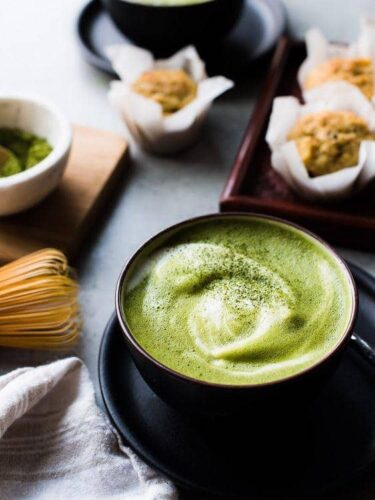
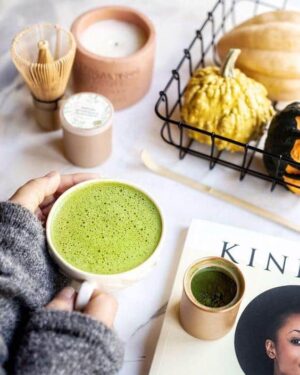
จะเห็นว่า ชา นอกจากจะสามารถเพิ่มรสชาติของอาหารบนจานของคุณได้อย่างแท้จริง ในทางกลับกันการจับคู่ผิดก็อาจจะทำให้อาหารและชามื้อนั้นรสชาติแย่ไปเลยก็มี มาดูกันว่าชาเขียว เหมาะกับการจับคู่กับอาหารชนิดใดบ้าง
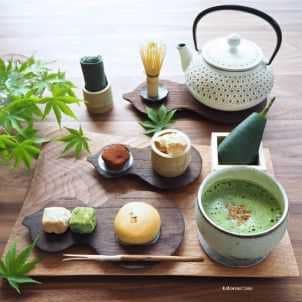
- อาหารญี่ปุ่นและชาเขียว ถือเป็นส่วนผสมที่ดีต่อสุขภาพและเข้ากันที่สุด
อาหารของญี่ปุ่นที่ประกอบด้วยซา ชิมิ ข้าวปั้น ราเมง อาหรกลุ่มนี้จะเข้ากันได้ดีกับชาเขียว โดยเฉพาะเซนฉะที่มีความสมดุลของความเป็นกรดและความหวานที่เข้ากันได้ดีกับรสชาติของอาหารญี่ปุ่นนั่นเอง
- อาหารซีฟู้ด ชาเขียวโดยเฉพาะเซนฉะจะเข้ากันได้ดีกับอาหารทะเล เพราะช่วยเพิ่มรสชาติของกันและกัน ซึ่งส่งผลให้เกิดการผสมผสานที่เป็นเอกลักษณ์ในปากและทิ้งรสขมเล็กน้อยที่ค้างอยู่ในปากซึ่งทำให้ต้องการอาหารซีฟู้ดมากขึ้น
- ขนมที่ใช้ช็อคโกแลต ช็อคโกแลตมีโกโก้ซึ่งให้รสขม หรือจะเป็นดาร์กช็อกโกแลตที่มีโกโก้มากกว่าเมื่อเทียบกับช็อคโกแลตอื่นๆ ทำให้มีรสขมอย่างเข้มข้น หากจับคู่กับชาเขียวที่ผสมผลไม้ จะได้รสชาติที่ลงตัวจากความขมของโกโก้และความหวานจากชาเขียว หากต้องการทานช็อคโกแลตประเภทหวานๆ เช่น ช็อกโกแลตนม ชาเขียวก็เป็นคู่ที่ดี เพราะรสขมเล็กน้อยของชาเขียวจะช่วยเพิ่มรสหวานของช็อกโกแลต
- ไก่ทอดรสชาติที่ได้จากชาเขียวจะเข้ากันได้ดีกับไก่ทอด เพราะชาเขียวจะช่วยลดอาการปากมันเยิ้มที่ได้จากการกินไก่ทอด
- ขนมปังโฮลวีตและชาเขียวเป็นอาหารเพื่อสุขภาพที่ดีเยี่ยมและสามารถทำเป็นอาหารเช้าที่มีคุณค่าทางโภชนาการได้การจับคู่นี้สามารถกระตุ้นการเผาผลาญได้เป็นอย่างดี
จะเห็นว่าชาเขียวเป็นเครื่องดื่มสารพัดประโยชน์ที่สามารถจับคู่กับอาหารได้เกือบทุกชนิด การทานชาแต่ละชนิดกับอาหารแต่ละอย่างจึงมีรสชาติแตกต่างกันไป ทั้งนี้ก็ขึ้นอยู่กับความชอบของแต่ละบุคคลด้วย หากร้านชาไหนที่ไม่มีเมนูของคาวทาานคู่ชาแล้ว ลองดูส่วนผสมอื่นที่มาผสมกับชาเขียวแก้วโปรดของคุณให้ได้รสชาติที่แตกต่างกันออกไป ยิ่งไปกว่านั้นชาเขียวมัทฉะของญี่ปุ่นมักจะมีกลิ่นหอมของแอปเปิ้ลและดอกกุหลาบที่เด่นชัดมากขึ้นเมื่อผสมกับกลิ่นหอมของแตงกวาสีเขียวบางชนิด บางคนผสมกับตะไคร้ ขิง หญ้าฝรั่น แอปเปิ้ล สับปะรด แอปริคอท มะเขือเทศ หรือเหล้ารัม ก็ให้รสชาติที่แตกต่างออกไป เพราะชาเขียวจับคู่กับอะไรก็อร่อย ^^
ที่มา
https://www.teavivre.com/info/how-to-pair-tea-and-food.html
https://www.pinterest.com/pin/100768110397035818/
https://www.japanesegreenteain.com
บทความจาก : Fuwafuwa
How to Create Your Own Custom Green Tea Blend
“ชาที่ดี ใบชาตั้งต้นต้องดี” หัวใจสำคัญแรกเริ่มเลย ก่อนจะรู้จักการเบลนด์ชาเอง ใบชาตั้งตั้นที่กล่าวถึงนี้ ก็คือชาดำ ชาเขียว และชาอู่หลง พอได้ใบชาตั้งต้นดีแล้ว จะเอามาเบลนด์กับอะไร รสชาก็จะอร่อย หอมตามไปด้วย กล่าวคือ ชาเขียวที่เหมาะกับการนำมาเบลนด์เองได้นั้น ควรเป็นชาที่ปลูกในที่ภูเขาสูง อากาศเย็น อย่างที่ญี่ปุ่น ที่นั่นเขาจะดื่มชากันสดมากๆ เพราะผลิตผลเขาดีมาก ชาที่ดี จึงมักมีจุดตัดกันที่ แหล่งที่มาของชา การปลูก ดิน แหล่งชาไหนจะสร้างชามาได้เลิศกว่ากัน
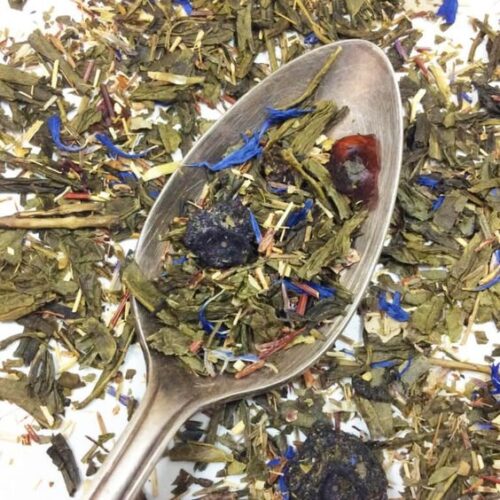
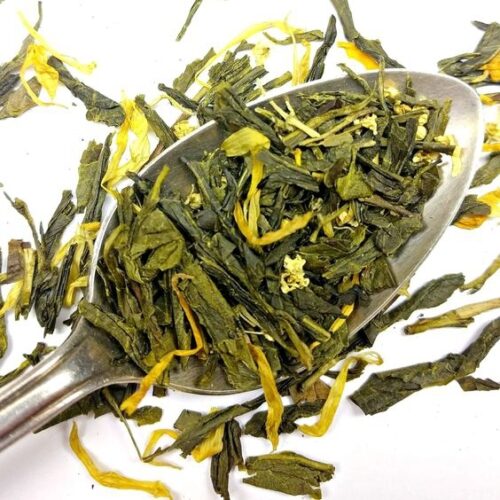
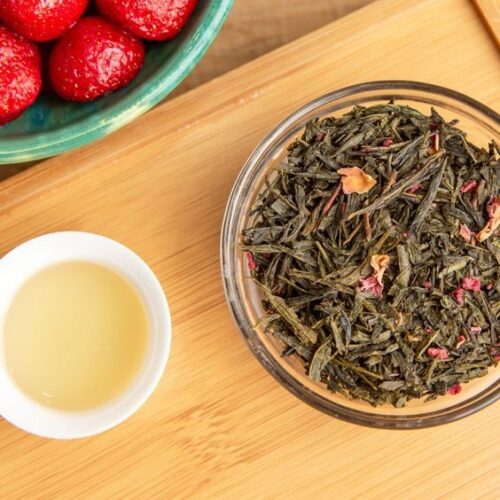
เมื่อเราได้ชาตั้งต้นที่ดี ความสนุกและซับซ้อนของชายังอยู่ที่การเบลนด์ส่วนผสมอื่นเข้าไปเพื่อให้มีกลิ่นและรสที่มีมิติน่าสนใจมากขึ้น โดยเฉพาะสมุนไพรที่นอกจากจะมีกลิ่นรสเฉพาะตัว ยังมีสรรพคุณดีๆ ที่ช่วยเรื่องสุขภาพอีกด้วย เช่น หากเลือก ดอกลาเวนเดอร์และกุหลาบตากแห้งดอกจิ๋วๆ ที่เติมความน่ารักให้ชา จะช่วยบำรุงระบบหมุนเวียนโลหิต พร้อมทั้งคลายเครียด ดอกคำฝอยช่วยลดไขมันในเส้นเลือด แถมยังช่วยให้ชาสีสวย หากใครหลับยาก ถ้าเป็น ดอกคาโมมายล์และดอกหอมหมื่นลี้ช่วยให้ผ่อนคลายและหลับสบายขึ้นดอกเก๊กฮวยแก้ร้อนใน ดีต่อหัวใจ หรือถ้าเลือกผสม ดอกอัญชันแห้งก็จะช่วยบำรุงสายตาและเพิ่มภูมิคุ้มกันให้ร่างกายใบเตยแห้งช่วยลดไข้ บำรุงผิว และแก้ท้องผูก ตะไคร้แห้งช่วยขับลมและแก้คลื่นไส้ นอกจากนี้ยังมีส่วนผสมตัวอื่นๆที่น่าลอง เช่น หญ้าหวาน ข้าวเหนียวดำ ขิง มะม่วง กระเจี๊ยบ ซินนาม่อน
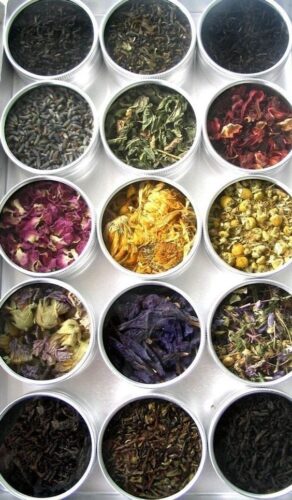
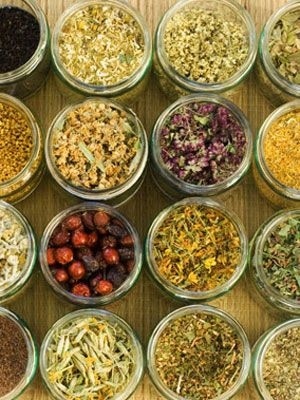
พอรู้จักสรรพคุณของชาแล้ว มาลองเริ่มเบลนด์ชากันเองดีกว่า หลักการง่ายๆ ของการเบลนด์ชาเบื้องต้น เริ่มต้นง่ายๆ จากการเลือกชาและสมุนไพรที่ชอบก่อน ต้องออกแบบรส และกลิ่นไว้คร่าวๆ ก่อนว่าต้องการรสแบบไหน ประมาณไหน อยากได้รสหลักเป็นอะไร แล้วค่อยๆ ใส่ลูกเล่นเข้าไปเพิ่ม หลักการง่ายๆ คือการค่อยๆ ปรับแก้จนได้รสที่ใกล้เคียงสิ่งที่คิดไว้ สัดส่วนใบชาและสมุนไพรที่แนะนำคือ ใบชา 3 ส่วน ต่อสมุนไพร 1 ส่วนใส่ลงถุงชา หรือที่กรองชา โดยลองสกัดชาที่เบลนด์แล้วด้วยน้ำร้อนอุณหภูมิประมาณ 95 องศาเซลเซียส เทน้ำลงไปชาเหมือนเวลาชงชาปกติ เพราะจะได้ชาที่มีรสชาติพอดิบพอดี
สิ่งที่ต้องดูนอกจากรสชาติ คือ ดูสีสัน และกลิ่นที่เข้ากันได้ เช่น ไม่ควรใส่ดอกไม้ที่กลิ่นหอมทั้งคู่ กลิ่นจะตีกัน เช่น กุหลาบ กับ ลาเวนเดอร์ หรือควรจับคู่กลิ่นรสที่เสริมกัน เช่น ใบเตยกับตะไคร้ จะยิ่งให้ความสดชื่นในตอนดื่ม หากไม่แน่ใจ จะลองชงดื่มดูก่อนก็ได้ว่าได้กลิ่น สี และรสอย่างที่ต้องการหรือไม่
แต่การเบลนด์ชาก็ไม่ใช่ว่าจับอันนั้นผสมอันนี้ก็เสร็จ เพราะเรื่องสัดส่วนเป็นเรื่องสำคัญ สมุนไพร ดอกไม้บางชนิดกว่าจะแช่ในน้ำร้อนให้กลิ่นและสี ชาเขียวก็อาจจะถูกแช่จนขมไปหมด ส่วนที่ยากของการเบลนด์ชาคือ ไม่มีทางตัดสินได้ว่ารสชานั้นจะออกมาเป็นอย่างไรในการผสมของแห้ง สุดท้ายชาต้องถูกแช่ในน้ำร้อน กลิ่นและรสก็จะเปลี่ยนแปลงไปอีกจากที่เราชอบ กว่าจะได้ชา 1 เบลนด์ต้องผ่านการลองผิดลองถูกซ้ำแล้วซ้ำเล่าไม่รู้กี่ครั้ง จนได้จุดที่สมดุลที่สุด
ส่วนร้านที่เริ่มเบลนด์ชาเองได้จนเชี่ยวชาญแล้ว สามารถต่อยอดชุดชาเบลนด์ เป็นชุดของขวัญ รวมชาสรรพคุณดีๆ กลิ่นหอมๆ ใส่โหลผูกโบ หรือแพ็คลงกล่องอย่างสวยงาม แทนกระเช้าอาหารแปรรูปที่วางขายอยู่ทั่วไป ก็น่าสนใจและบ่งบอกถึงความตั้งใจในการคัดเลือกชาคุณภาพให้ผู้รับประทับใจ
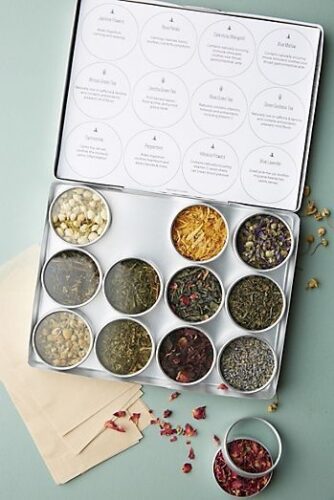

ที่มา
http://www.lovecreatecelebrate.com/homemade-peppermint-tea/
https://creationsbyfc.com/products/tea-sampler-gift-set-10pc
https://www.anthropologie.com/wellness-teas-coffees-elixirs
http://www.womansday.com/health-fitness/10-healing-herbs-used-in-teas-75249
https://www.anthropologie.com/wellness-teas-coffees-elixirs
บทความจาก : Fuwafuwa

